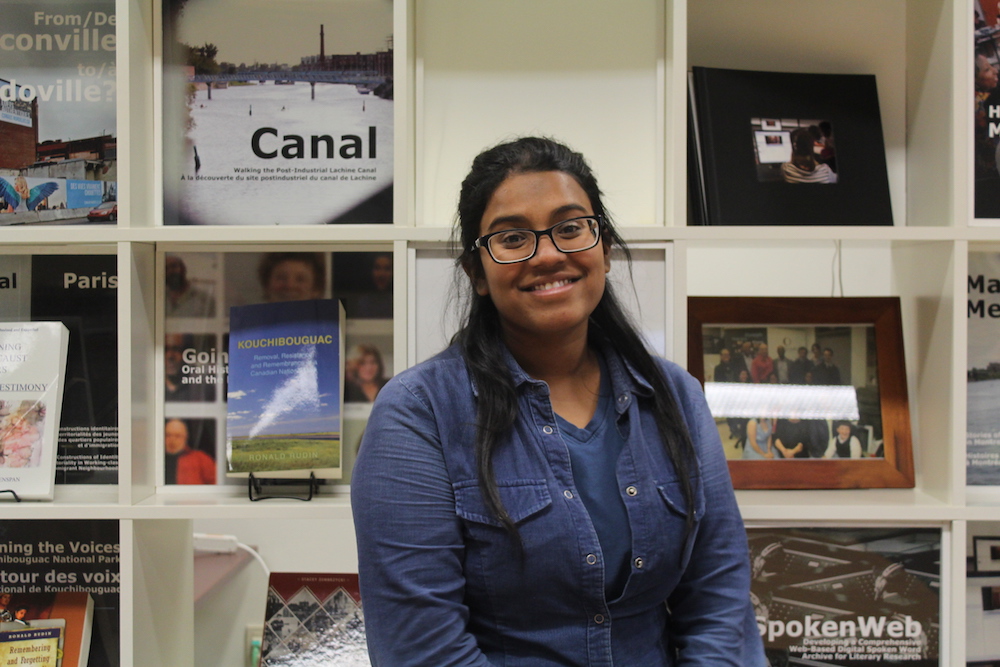Concordia course explores the history of the Negro Community Centre
Last year, Concordia history students who were enrolled in a course titled “Telling Stories” sifted through archives collected from the Negro Community Centre (NCC) for the first time.
“We asked ourselves: ‘What’s in the boxes, and how can we return those stories to the community?” said Steven High, the Concordia history professor in charge of the course. High is also a founding member of the university’s Centre for Oral History and Digital Storytelling, which offered support and resources to the students for this project.
The students detailed what they found in research papers that were showcased at the public launch of the NCC Archive at the Universal Negro Improvement Association (UNIA) Liberty Hall in Little Burgundy on April 11, 2017. A year later, new students enrolled in the course continue to explore the history of what was once a cultural and recreational hub for Montreal’s black community.
“The NCC was an important hub in that community from 1927 to 1992,” said High, whose essay “Remembering the Negro Community Centre” was published in the winter 2018 issue of Quebec Heritage News. After the centre closed its doors in 1992, “it was abandoned until five or six years later, when the NCC invited Concordia to go in and save all of these records,” High recounted. “They saved about 100 boxes of material.” The building that used to house the NCC was demolished in 2014.
It is the material from these 100 boxes that Concordia students like Neveatha Selvarajah continue to explore.
“We wanted to understand various social spaces that aid the development of children within the Little Burgundy region,” she said. In addition to the NCC archives, Selvarajah went through online databases documenting the history of childhood spaces for the project. “We interviewed Patrick Thornhill, a lifetime member of the Union United Church on Delisle Street. He explained his experience within the church and within the NCC helped him cope with racism throughout his life,” she said.
Selvarajah said she hopes to open up an online network to continue sharing the stories of the NCC and exploring the Little Burgundy community beyond the classroom setting. “My goal is to work with Little Burgundy when I do my master’s,” she said. “I hope to be able to do a public history through a website and have my thesis as a website.”
Kelann Currie-Williams, a fourth-year communication studies student, was also among the students enrolled in last semester’s edition of “Telling Stories.” She said the research and community work she did through the course did not fulfill all of her wishes to give back to the Little Burgundy community and the larger Montreal black community. In Currie-Williams’s opinion, so much more needs to be done in terms of networking and helping black community centres thrive in Montreal.
“The network needs to be strengthened between all of us,” she said. Currie-Williams’s goal is to create a network of various black community centres in Montreal in the hopes of developing a space similar to the NCC, but that focuses on teaching the long-standing history of blackness in Canada.
“My envisioning would be to see all of these communities working together in such a seamless way. I see that being the future,” she said, adding that she hopes to initiate this project with High during her graduate studies.
“I think Black History Month is really important because it shines a spotlight onto that history, but it should not be limited to February,” High said. “We should be doing it year-round. Montreal’s Black History has been overlooked, and it’s a rich history. When you study Little Burgundy, it’s connected to Harlem, Detroit and global decolonization movements. It’s amazing how interconnected the black diaspora is.”
Feature photo by Alex Hutchins




